AI Model Schema Generator
Mastering AI Model Schema Generation with ClickUp
Unlock the power of AI to design precise model schemas—streamlining your data science workflows. Leverage ClickUp Brain to automate schema creation and maintain accuracy effortlessly.
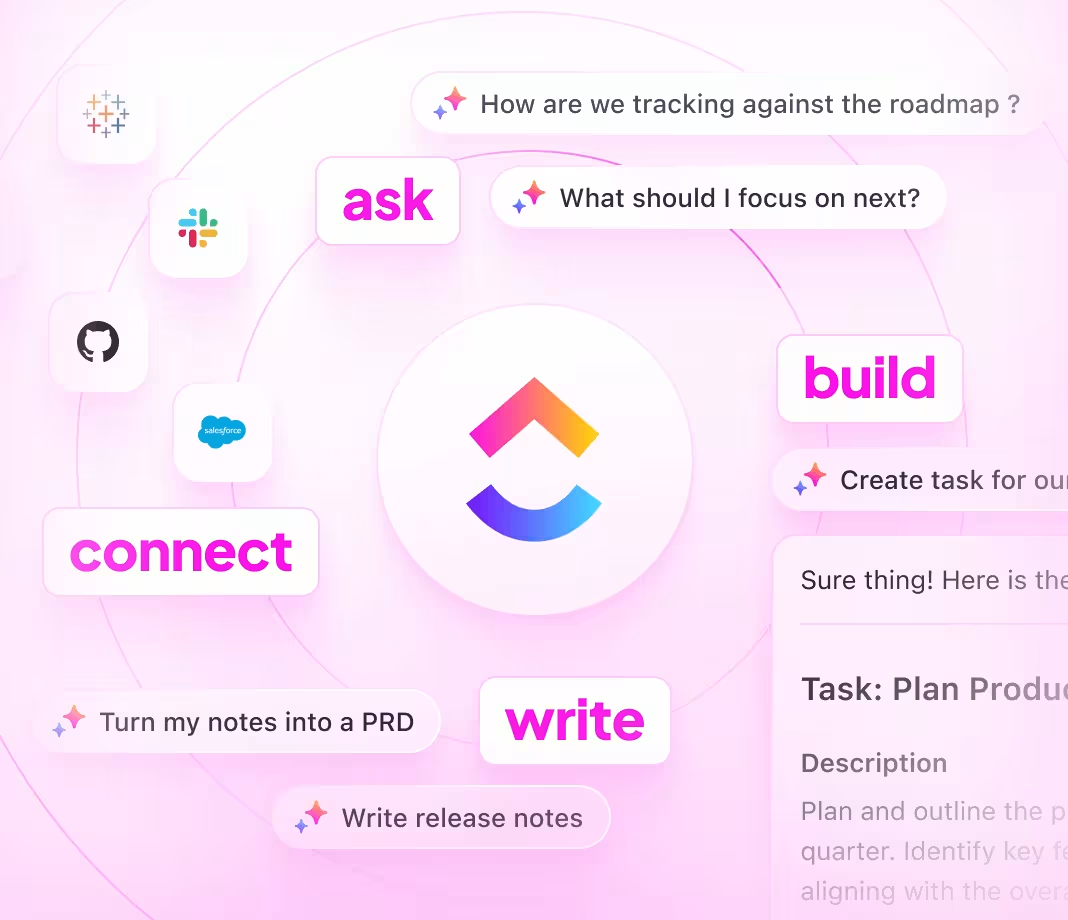
Trusted by the world’s leading businesses
AI in Data Modeling
Understanding AI Model Schema Generators
An AI Model Schema Generator automates the creation and management of database and AI model schemas—structures that define how data is organized and interpreted in systems. Traditionally, crafting these schemas involved manual coding, complex ER diagrams, and iterative revisions that consumed valuable time and introduced errors.
AI transforms this process by interpreting natural language or existing datasets to build accurate, adaptable schemas on the fly. With tools like ClickUp Brain, schema generation becomes integrated within your workflow, enabling dynamic updates and collaboration that keep your models aligned with evolving data and project goals.
ClickUp Brain vs Traditional Tools
Why ClickUp Brain Elevates AI Model Schema Generation
ClickUp Brain offers a context-rich, integrated experience—moving beyond static schema tools to a live, collaborative environment.
Conventional Schema Tools
- Isolated workflows: Schema design and updates occur in separate tools, leading to fragmented processes.
- Static diagrams: ER diagrams or schema files need manual syncing with databases.
- Error-prone updates: Manual edits increase risk of inconsistencies and outdated models.
- Limited collaboration: Sharing schema changes requires extra steps and version control is challenging.
- Rigid structures: Difficulty adapting schema logic to evolving AI model requirements.
ClickUp Brain
- Integrated design: Schema generation lives within your project management and data workflows.
- Real-time collaboration: Teams co-create and refine schemas together instantly.
- Dynamic syncing: Schemas auto-update as data sources and model parameters evolve.
- Secure access: Schema documents inherit ClickUp’s permission controls.
- Brain Max capabilities: Combine multiple data sources and logic to build complex, adaptable schemas.
Step-by-Step Process
Generating AI Model Schemas with ClickUp
Follow this guide to build precise, adaptable AI model schemas faster and smarter.
1. Gather Data Inputs Seamlessly
Traditional approach: Manually collect disparate data definitions, formats, and requirements from various teams—often leading to gaps or conflicts.
With ClickUp Brain:
Automatically aggregate data attributes, sample datasets, and metadata from your projects, docs, and tasks. Just ask: “Generate a schema for the customer churn prediction model using our latest datasets.”
2. Let AI Define Relationships and Constraints
Traditional approach: Define table relations, keys, and constraints manually—time-consuming and prone to errors.
With ClickUp Brain:
AI analyzes data patterns and project context to suggest entity relations, primary keys, and validation rules that reflect real-world constraints.
3. Customize Schema Structure to Fit Models
Traditional approach: Fixed schema templates struggle to adapt to novel AI model architectures or workflows.
With ClickUp Brain:
Use visual tools like Whiteboards or Mind Maps within ClickUp to tailor schema designs. Brain proposes modular schema components aligned with your model’s needs.
4. Maintain Live, Versioned Schemas
Traditional approach: Schema updates are manual and disconnected from project changes, leading to outdated or conflicting designs.
With ClickUp Brain:
Schemas stay synchronized with your workspace, updating automatically as data or model parameters change, with full version history and collaboration.
Revolutionize Your Data Modeling
Skip tedious manual design—create AI model schemas that evolve with your projects using ClickUp Brain.





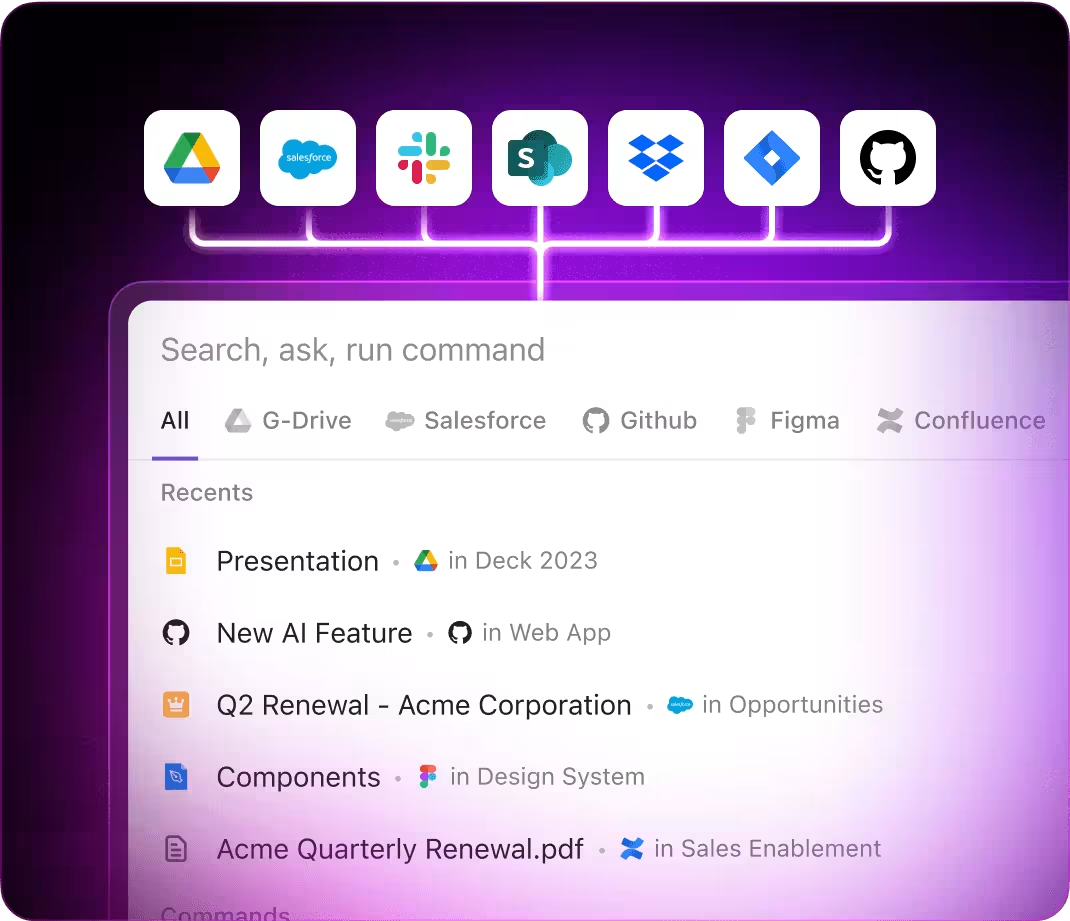
Use cases
3 Impactful Use Cases for AI Model Schema Generators
Discover how data scientists and database architects harness AI schema tools to accelerate innovation.
Use case 1
Accelerating Data Science Model Development
Data scientists use AI-generated schemas to rapidly prototype model inputs and outputs, reducing iteration cycles and ensuring data consistency from the start.
This leads to faster experimentation and deployment of robust AI solutions.
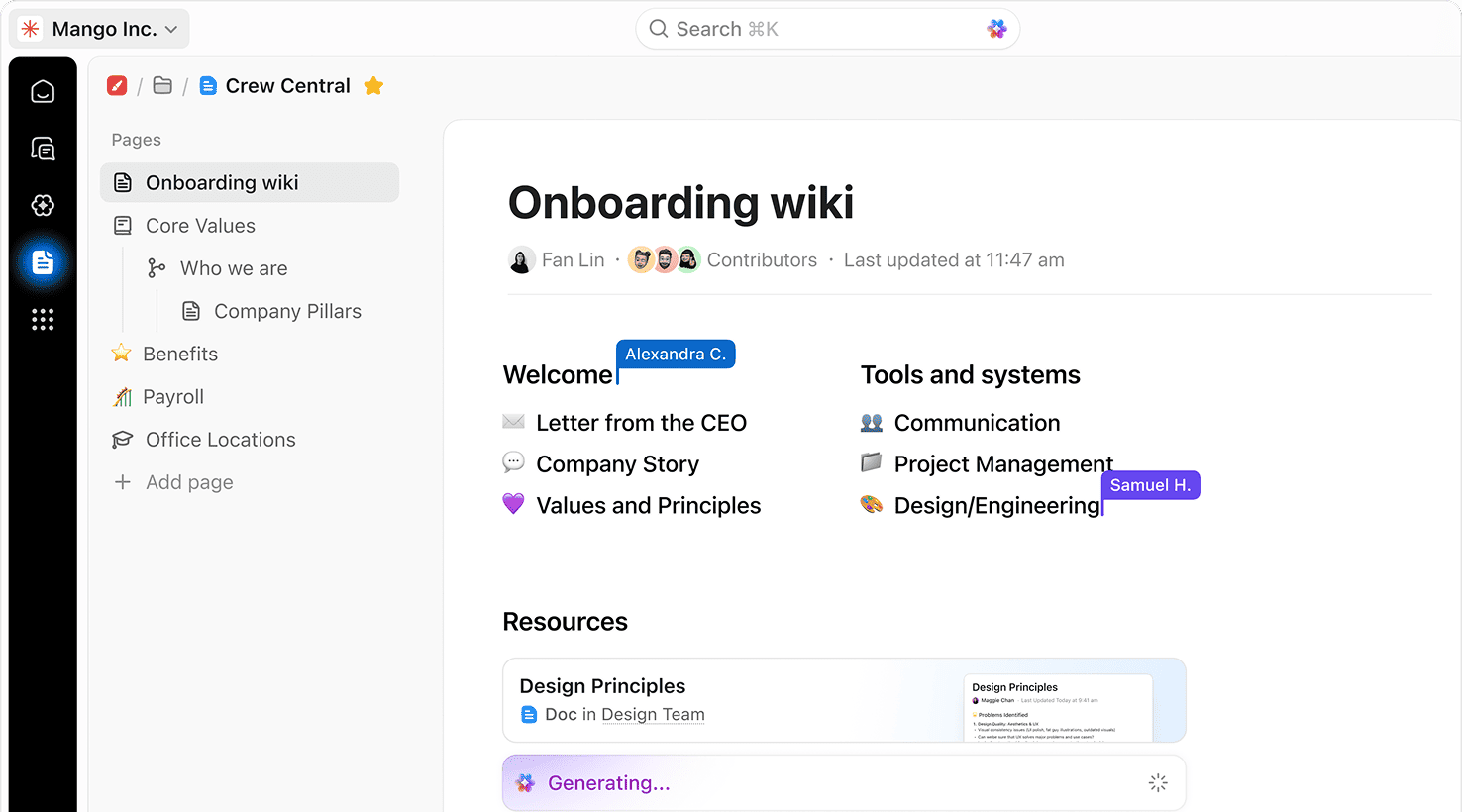
Use case 2
Simplifying Complex Database Design
Database architects leverage AI to auto-generate normalized schema designs that accommodate evolving data structures.
This minimizes manual effort and errors, streamlining database maintenance and scalability.

Use case 3
Enhancing Collaboration Between Teams
Cross-functional teams use AI schema generators to communicate data requirements clearly and iteratively.
This fosters alignment between data engineers, scientists, and business stakeholders, reducing misinterpretations and rework.
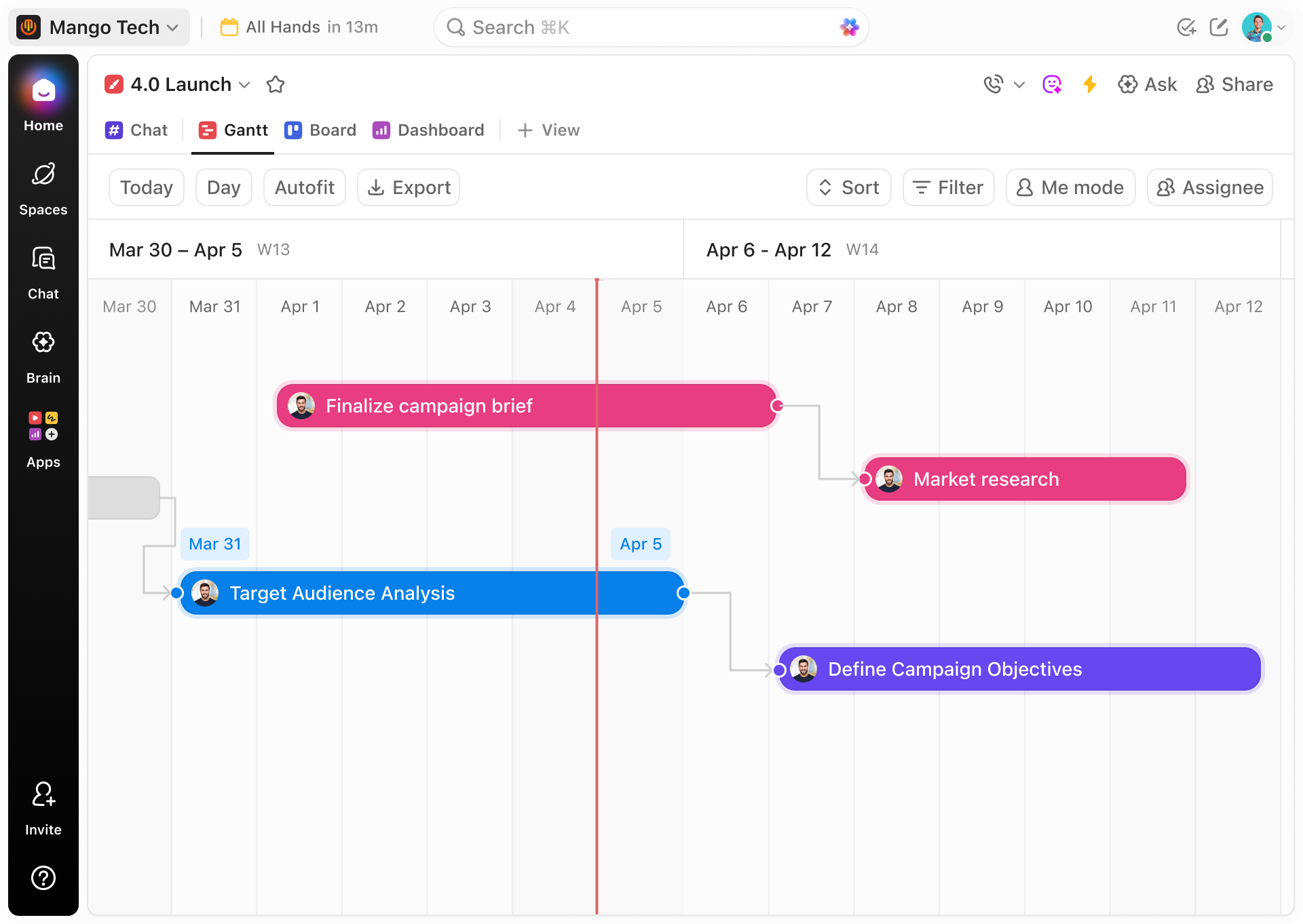
Key Features
Essential Attributes of a Top AI Model Schema Generator
These six features ensure your schema generator delivers precision, flexibility, and integration.
Natural Language Schema Creation
Transform plain descriptions into detailed model schemas instantly.
Continuous Data Synchronization
Keep schemas updated live with evolving datasets and project changes.
Deep Workflow Integration
Link schemas to tasks, data sources, and documentation seamlessly.
Flexible Schema Visualization
Adapt schema diagrams to diverse AI models and database architectures.
Intelligent Relationship Mapping
Automatically infer entity relationships and data constraints.
Collaborative Editing & Version Control
Enable teams to co-design schemas with real-time updates and history tracking.
Elevate Your Data Models Today
Design, refine, and deploy AI model schemas effortlessly—ClickUp Brain and Brain Max handle the complexity so you can focus on insights.





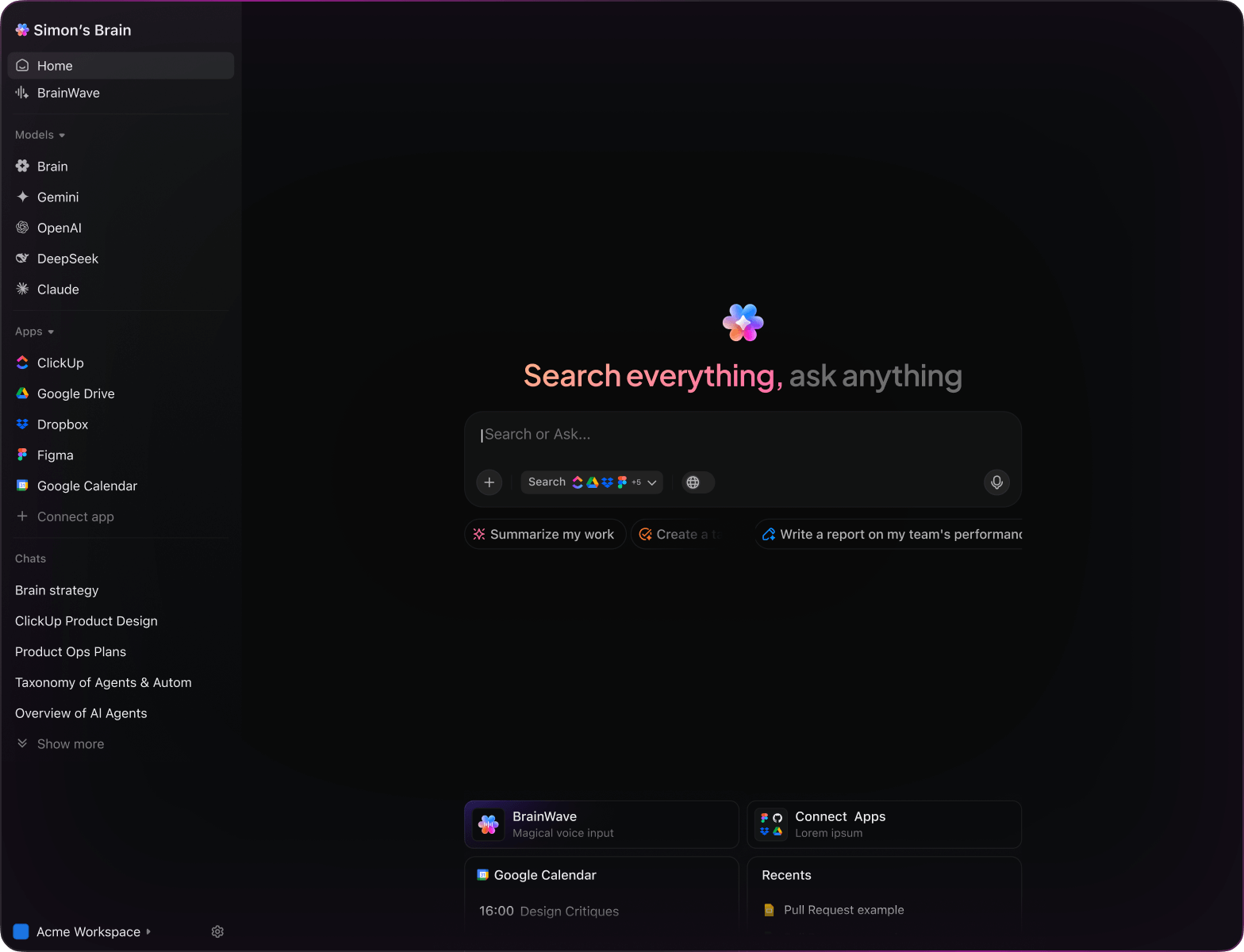
FAQs